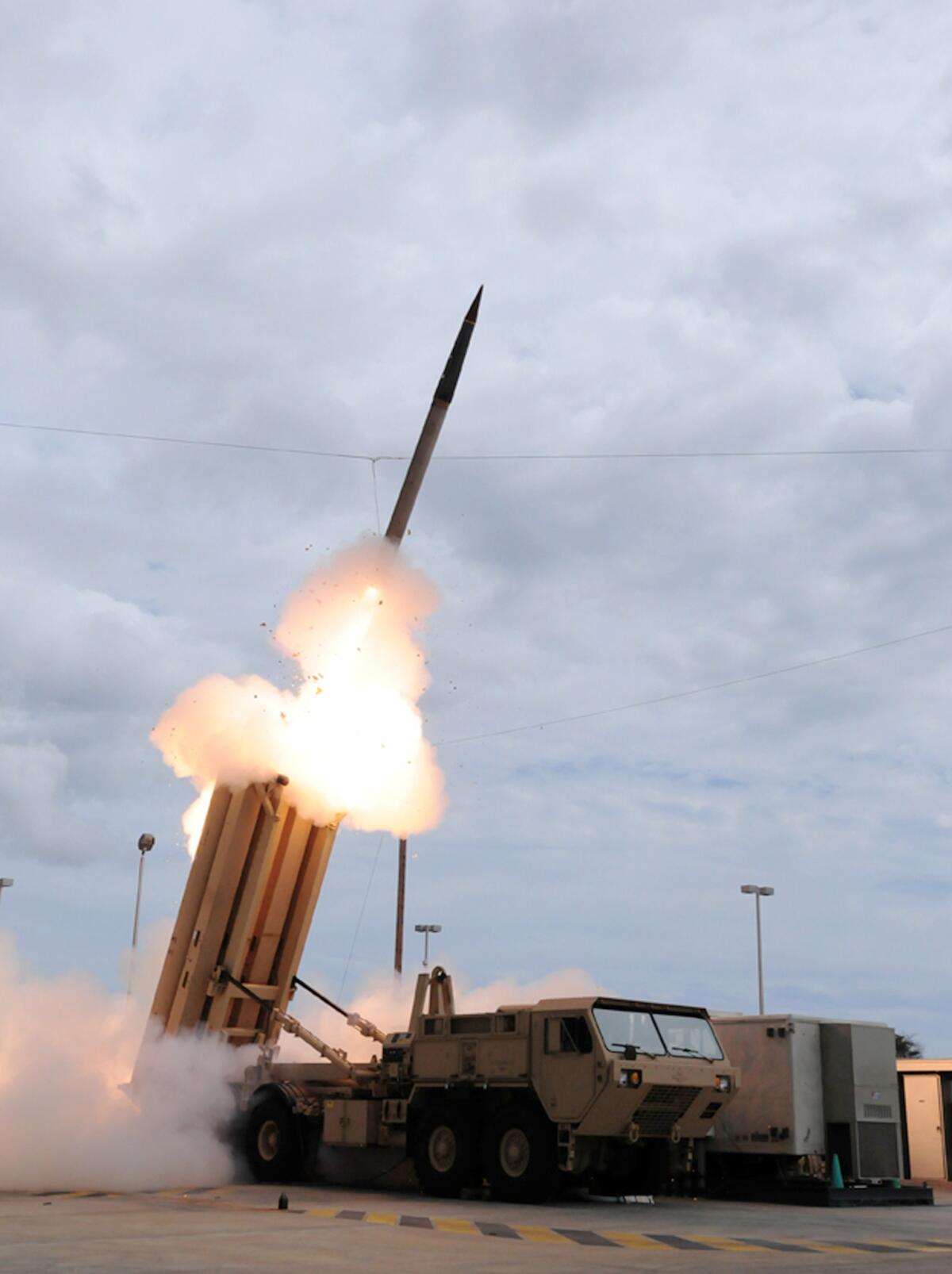Korean tensions prompt U.S. to beef up defense of Guam

- Share via
WASHINGTON—The Pentagon said Wednesday that it is sending a mobile missile defense system to Guam as a “precautionary move,” as Defense Secretary Chuck Hagel said North Korea posed a “real and clear danger” to the U.S. military base on the western Pacific island, as well as to allies and other U.S. territory.
North Korea has named Guam and Hawaii as potential targets in a series of bellicose statements in recent weeks that have raised tensions on the Korean peninsula and prompted a series of military moves aimed at beefing up the U.S. military presence in the region and reassuring allies that the U.S. will come to their aid in case of attack
The decision to send a Terminal High Altitude Area Defense system to Guam comes after Pentagon officials were questioned in recent days about whether the island -- which is a U.S. territory -- has been covered by the U.S. missile defense system. The system includes ground based interceptors in Alaska and California, as well as warships capable of shooting down missiles.
North Korea has “ratcheted up their bellicose, dangerous rhetoric and some of the actions they’ve taken over the last few weeks present a real and clear danger and threat,” Hagel said in a speech at the National Defense University on Wednesday.
Areas at risk include South Korea and Japan, as well as Guam, Hawaii and the West Coast of the United States, he said. “We have to take those threats seriously.”
Despite the concerns, North Korea has not demonstrated that its missiles have the range to hit Guam or Hawaii, much less the U.S. mainland. Nor is it known to have a nuclear warhead small enough to be carried on its missiles. But U.S. officials said its missile capabilities have expanded in recent years more rapidly than predicted.
Asked about Guam this month, Undersecretary of Defense James Miller said the U.S. missile defense system “provides coverage of not just the continental United States, but all the United States.” But some analysts note that the U.S. military’s own maps of the geographic reach of the ground-based interceptor shows Guam uncovered.
Defense officials said that Guam was still covered by missile-carrying U.S. warships in the Pacific equipped to shoot down ballistic missiles. Sending the ground-based system to Guam beefs up the U.S. defense. The so-called THAAD system, which the Pentagon said would arrive in Guam “in coming weeks,” includes a truck-mounted launcher, interceptor missiles, a tracking radar and a fire-control computer system.
It shoots interceptors designed to hit ballistic missiles in the final phase of their flight as they descend toward their targets.
“I hope the North will ratchet this very dangerous rhetoric down,” Hagel said. “There is a pathway that’s responsible for the North to get on a path to peace.” But, he added, “you don’t achieve that responsibility and peace and prosperity by making nuclear threats and taking very provocative actions.”
ALSO:
North Korea could stumble from bluster to war
North Korea vows to expand nuclear arsenal, signaling end of talks
Pyongyang closes industrial park shared by North and South
More to Read
Sign up for Essential California
The most important California stories and recommendations in your inbox every morning.
You may occasionally receive promotional content from the Los Angeles Times.











